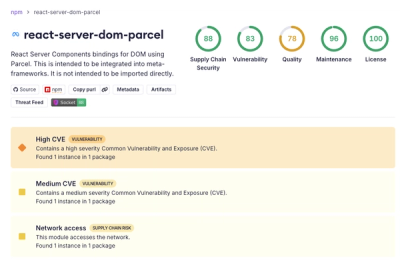typescript-project-bootstrap
This package contains reusable configurations, that can easily be included in every type of Javascript/Typescript project.
It can also be used to bootstrap the initial configuration for a new package.
[[TOC]]
How it works
In order to install the package in your project, the package manager needs to fetch typescript-project-bootstrap package from npm registry.
Installing typescript-project-bootstrap as a devDependency
npm install --save-dev typescript-project-bootstrap
npm i -D typescript-project-bootstrap
yarn add --dev typescript-project-bootstrap
How to use it
Bootstrapping/updating all the config files
Included with the package is a small CLI tool that provides the command to bootstrap your projects.
To bootstrap a typescript package, simply run the following command (NOTE: pay attention to the npx! It will use the node_modules/.bin if it exists, so the second time will be faster!)
npx typescript-project-bootstrap create --type package --language typescript my-package
npx typescript-project-bootstrap create --type package --language typescript my-package
This will create all the configuration files needed for your type of project!
Update a package
To update a package, simply bootstrap again! It may override some files that we didn't want to, but git has our back here! Just be sure to check the files before staging them!
Configuration files
Configuration files for a lot of scenarios are included in this package: jest, eslint, prettier, etc. However, to set it up in your project, you still need to create a config file that includes it (sort of like a "proxy").
For example, to include the eslint configuration you need to create a .eslintrc.js file like so:
module.exports = require('typescript-project-bootstrap/.eslintrc.typescript')
That also allows to extend the base configuration:
const base = require('typescript-project-bootstrap/.eslintrc.typescript')
module.exports = {
...base,
overrides: [
...(base.overrides !== undefined ? base.overrides : []),
{
files: ['src/**/*.type.ts'],
rules: {
'@typescript-eslint/no-unused-vars': 'warn',
'@typescript-eslint/consistent-type-imports': 'off',
},
},
],
}
FAQ
Custom configurations VS standard configurations
By using *.config.js type of files, you can gain a lot of our customization opportunities.This is especially useful to allow package-users of the typescript-project-bootstrap to customize the behavior without requiring to first make a PR on this package.
Which release configuration should I use in my project?
This package provides different release configuration templates:
Because husky registers to every existing git-hook, and executes node on each of them. If you're a frequent committer, then you'll notice some performance improvement with lefthook! It only registers to the hooks that are specified, and runs a small Go-binary to launch the configured commands.
I already had husky configured, how do I switch?
First of all, you'll need to transfer your hook commands from your husky config to the lefthook.yml. Note that by default, typescript-project-bootstrap already comes with a config file that you can extend: lefthook.base.yml. This should be enough for most projects, but feel free to extend it with your own hooks, or suggest additional hooks to be added to the lefthook.base.yml!
With the following commands, you can clean up the hooks that were registered by husky and replace them with lefthook hooks. Note: this assumes you have typescript-project-bootstrap already installed.
rm ./.git/hooks/*
npx --no-install @arkweid/lefthook install
The package.json is changed on a postinstall. I don't want that, can I disable that?
Well yes, you can! But be extra careful here. Most of the scripts added to the package.json file are used in some form by the githooks or the default pipeline scripts. Make sure to add all required scripts like lint, check:types, test:coverage and more to your local package.json file.
To be super sure see the post-install script in ./bin and make sure all scripts from the updatableScripts array are available in your package.json file.
Add the option preventScriptUpdates to your package.json file like so:
{
"name": "my-awesome-package",
"version": "1.2.3",
"private": true,
"preventScriptUpdates": true,
"author": "Batman",
}



